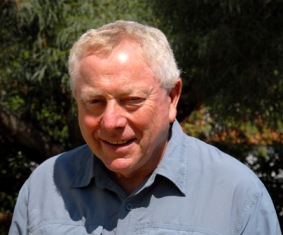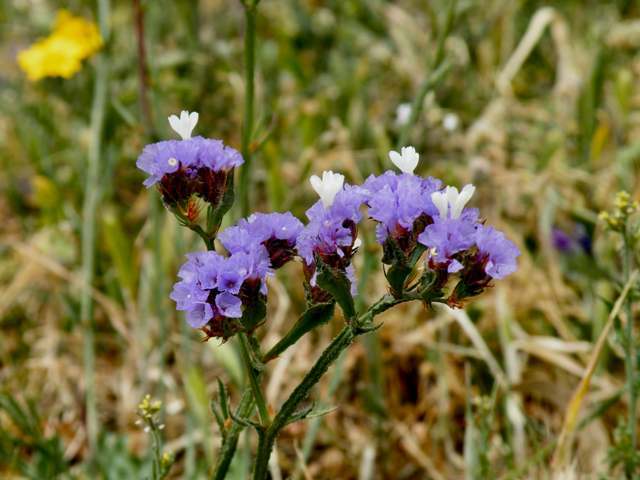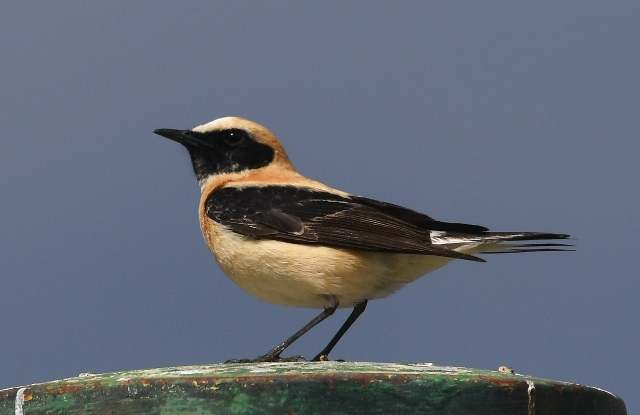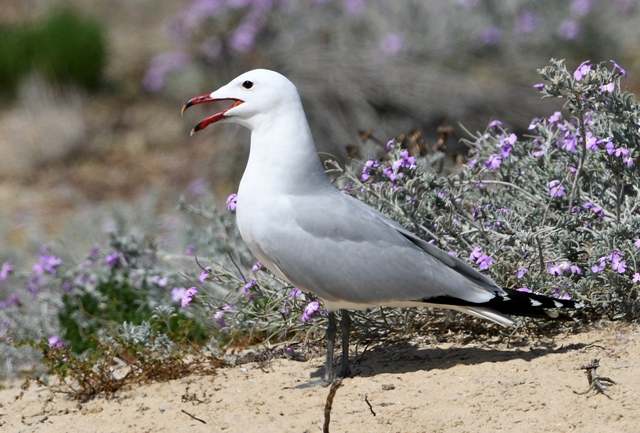Out with Papa-figos

Clive Viney - co-author of Algarve Wildlife - the natural year
Papa-figos (which literally translates as fig eater) is the Portuguese name for the Golden Oriole, one of the iconic visiting birds of the Algarve. Clive Viney is the co-author of Algarve Wildlife - the natural year, and now, under the guise of Papa-Figos, chronicles his finds, thoughts and feelings while walking in the Algarve countryside throughout the natural year. Look out for his regular updates, illustrated by his fellow co-author and photographer, Ray Tipper, who has kindly provided some of the photographs that illustrate these articles by clicking through from the links below.
Lower Guadiana Valley
On 21st April 2021, with John Edge and Ray Tipper, I set out at 06h35 to explore sites in the Lower Guadiana Valley. It was mostly sunny but chillier than of late and in exposed places a strong westerly wind blew. We did not rush around and stopped for coffee at bars in Junqueira and Azinhal and a disappointing lunch in Castro Marim of watery polvo (octopus) rice but saved by three canecas (tankards of beer). I was surprised that without too much wetland work we listed 95 species of birds. Unusually I only missed one. A memorable day.
Sapal da Amoladeira
In the Algarve, Spectacled Warblers have declined remarkably and this was one of the very few sites where it was still known to breed. I had only once before, many years ago, briefly visited this large area of sapal (saltmarsh) on the bank of the Rio Guadiana between the Castro Marim Reserve and the Quinta do Vale Golf Resort. Apart from the sapal there were attractive large ponds. Access was tricky and required my Discovery to negotiate a heavily rutted and muddy track. I doubt that after steady rain the area would be accessible by most vehicles. We located two stunning male Spectacled Warblers, one of which Ray had photographed a month before. Also noted in flight were two Lesser Short-toed Larks, another rarity, which has only a fragile foothold in this corner of the Algarve. Among the thirty or so species recorded in just under an hour were three Glossy Ibises, a bird that is undergoing a notable range expansion, a Raven and a Southern Grey Shrike.

Spectacled Warbler male photographed by Ray Tipper at Sapal de Amoladeira on 19th March 2021. Licence enquiry...

Sapal de Amoladeira
Quinta do Vale Golf Resort
This was the first time that I had been to this excellent site full of watery golf hazards and not recorded Purple Swamphen. Nevertheless, during this short visit I listed 33 species, including seven more Glossy Ibises, a Blue Rock Thrush, a Purple Heron, a Reed Warbler seen and singing, a Dartford Warbler and the first of many singing Nightingales.
Vale do Beliche
This lovely valley proved to be an excellent locality to list the bread and butter species required on a day like this. The real joy though was the roadside Winged Sea Lavender, which only grows in this corner of Portugal.

Winged Sea Lavender Limonium sinuatum, Vale do Beliche
Barragem do Beliche

Ray returned a week later and successfully photographed the wheatear. Licence enquiry...
The Algarve’s deep-sided reservoirs attract few birds but we found a Kingfisher, two Cormorants, a single Crag Martin and closely watched a superb male Western Black-eared Wheatear of the dark-throated form. Ray was very excited and said that he would return to photograph the bird.
Sapal da Moita
This vast area of saltmarsh and the grassy hills around were once the Mecca of birding in the Guadiana Valley. Lesser Kestrels, Black-shouldered Kites, Montagu’s Harriers, Quails, Spectacled Warblers and Little Bustards bred and a lonely Great Bustard lingered for some years. Great Reed Warblers and Little Bitterns bred in the reedy vegetation around the cattle ponds (charcos) and in spring and early summer wildflowers were breathtaking and a good variety of butterflies could be found. Unfortunately and apparently without thought, carob trees were planted over the hills and the bustards left. These bulky birds require a clear view of potential threats and sadly no one bothered to collect the carobs. Then the developers came and carved out the Quinta do Vale Golf Resort to the south but even more dramatically, across the Rio Guadiana the traditional farmland that not long ago was tilled by horse-drawn ploughs was transformed into an endless conurbation of golf courses, little boxes and apartment blocks. With recession after recession the Spanish development was abandoned and has lain empty and unwanted for several years.
It had been a long time since I penetrated what was left of the Sapal da Moita but I thought it worth a look. A disintegrating track, cattle fences and gates made the approach an obstacle course but the ruined Quinta da Moita was still barnacled with storks’ nests. Regrettably the saltmarsh was birdless and apart from a Common Kestrel there was not a bird of prey to be seen. Ray politely asked what I expected to see there and I took that as a gentle hint that we should move on.

Quinta da Moita
Azinhal
While sitting and sipping our coffee Ray noticed a pale phase Booted Eagle sailing high overhead. This boded well for the drive on the tracks around the hills to the north of the Sapal da Moita but it was not very birdy and we only added Thekla Lark and Blackcap to the day’s list. En route we dropped down to Corte Nova, a very pretty and remote spot on the Rio Guadiana. Here a large colony of Bee-eaters had nest holes in the sandy ground.
Almada de Ouro
Not so many years ago this was a thriving mixed farm, mostly on and above a Ria Guadiana floodplain. The inevitable happened and this extensive property was purchased by a developer for a golf resort and associated hotel and housing. Before anything started the recession came and apart from rendering the farm buildings uninhabitable work was not started. This is a remote area, far from the attractions of the coastal Algarve. Today development was no longer a threat and nature had reclaimed the fields and pastures. This was my fifth visit (the first was when it was a working farm) and at the end of last year I surveyed the area with John Edge, when we found it full of wintering birds and, mercifully, few signs of hunting. This was Ray’s first visit and he understood the potential. Here John picked out a distant but distinctive Short-toed Eagle but the real surprise was a Long-eared Owl heard in broad daylight (12h30). It was certainly a weird and penetrating sound. Fortunately Ray had a playback device and I must say that it sounded like the owl. After research, Ray concluded that it was the begging call of a juvenile Long-eared Owl, which could be heard during the day. Although I had seen winter roosting Long-eared Owls in the Pepper Trees at Castro Verde this was my first Algarve record.

Roosting Long-eared Owl at Castro Verde by Gonçalo Elias
Sede Scrape
After lunch we decided to look at the Castro Marim Reserve and add wetland birds to our growing list. Although the headquarters building is a disgrace the neglected manmade scrape does attract birds when nature had added water. There were a few ducks and Coot with trailing juveniles but the real surprise was a Greylag Goose. Ray said that it looked the real McCoy and opined that it was either winged or had simply decided not to leave with the wintering birds. I thought that its provenance must be in doubt but it went on the list.
Cais de Castro Marim
We had not set out to break any records but as we realised that we were doing well it was decided to have some fun. Passing by in the Discovery we saw shorebirds on drained down impoundments to the east of the town. Not many birds but a fine assortment that included a Ruff, two Little Stints, three Curlew Sandpipers and my first Little Tern of the year. A small flock of Greater Flamingos was a welcome sight.
Ponte da Areia – Guadiana Breakwater
John’s speciality is picking out distant Gannets and this he duly did but the bonus was finding two Great Skuas. The tide was dropping and the exposed sandbars filled up with gulls, including well over a hundred Audouin’s Gulls. A small flock of Knot, some of which were in full plumage, was another bonus.

Audouin’s Gull by Ray Tipper. Licence enquiry...
Lago de Aldeia Nova
Our last stop would be this lovely small lake amid a pine forest that usually held something special – perhaps the Purple Swamphens that we missed at the beginning of this superb day. Disappointingly the lake just held a few Coot and a single drake Common Pochard. The pines though had singing Short-toed Treecreepers, Crested Tits, a Turtle Dove (fast becoming a rarity) and a stunning male Golden Oriole. A lovely note to finish on.
In truth we noticed little apart from birds and the Algarve’s wonderful spring wildflower show. The only mammals were a couple of Rabbits and amphibians were just calling Iberian Water Frogs. Most butterflies were newly emerged Meadow Browns of our distinctive local race.

Meadow Brown female subspecies hispulla
Papa Figos
April 2021
Back to Papa Figos...

